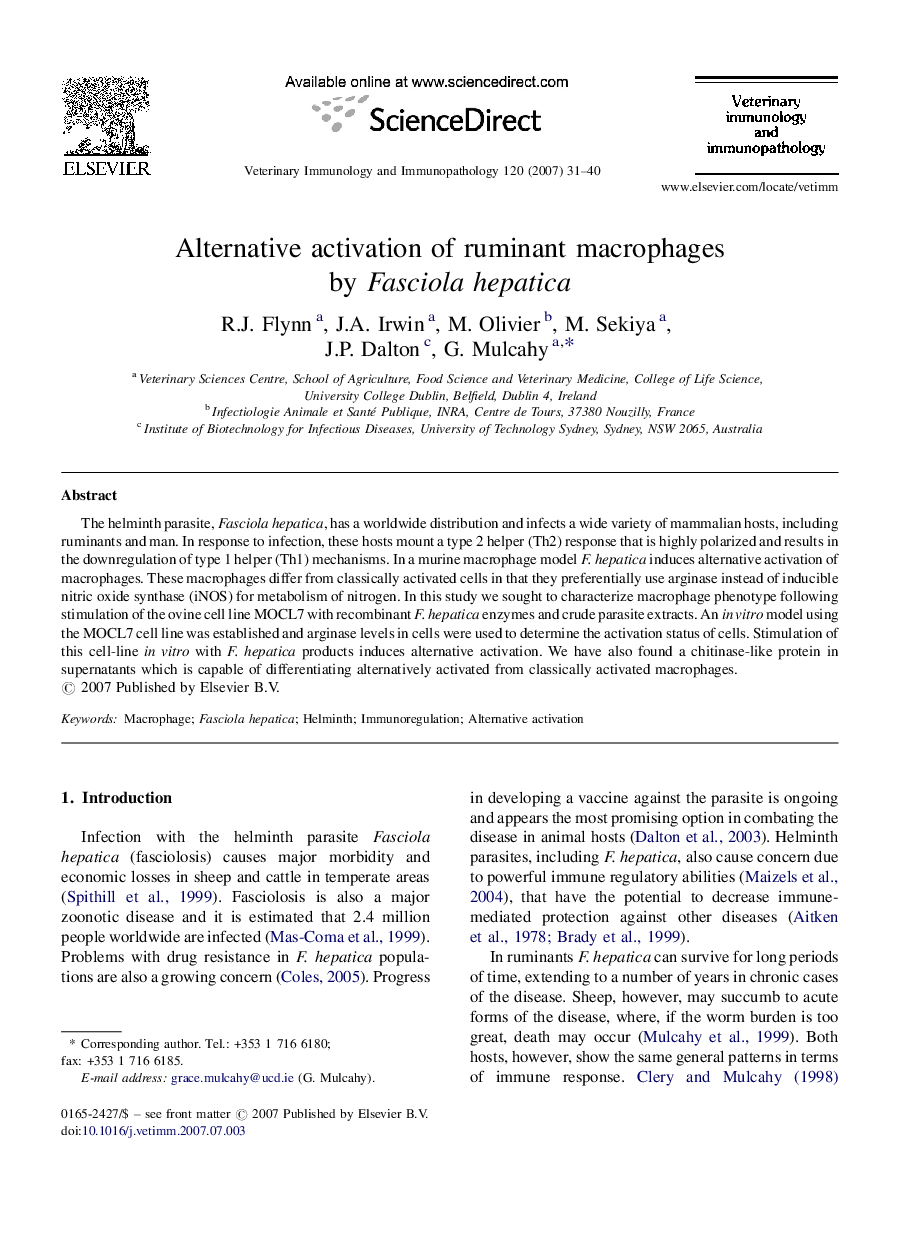| Article ID | Journal | Published Year | Pages | File Type |
|---|---|---|---|---|
| 2463149 | Veterinary Immunology and Immunopathology | 2007 | 10 Pages |
The helminth parasite, Fasciola hepatica, has a worldwide distribution and infects a wide variety of mammalian hosts, including ruminants and man. In response to infection, these hosts mount a type 2 helper (Th2) response that is highly polarized and results in the downregulation of type 1 helper (Th1) mechanisms. In a murine macrophage model F. hepatica induces alternative activation of macrophages. These macrophages differ from classically activated cells in that they preferentially use arginase instead of inducible nitric oxide synthase (iNOS) for metabolism of nitrogen. In this study we sought to characterize macrophage phenotype following stimulation of the ovine cell line MOCL7 with recombinant F. hepatica enzymes and crude parasite extracts. An in vitro model using the MOCL7 cell line was established and arginase levels in cells were used to determine the activation status of cells. Stimulation of this cell-line in vitro with F. hepatica products induces alternative activation. We have also found a chitinase-like protein in supernatants which is capable of differentiating alternatively activated from classically activated macrophages.
